Lisa Niver's Blog: We Said Go Travel, page 377
July 26, 2014
Travel Dreams in the USA

TRAVEL DREAMS
I know the fluorescent lights are making my pale skin look green. “I want to run away,” I thought as I pulled my laptop out while grasping the bar on the right side of the recliner allowing me to move effortlessly from a seated position to a supine one. Feet up, sequined pink flip-flops framing my tattoos, I got situated. I had time to kill. I tuned out the drone of the TV in the corner and turned my attention to my computer screen where I was gazing at the Roaming Gnome. Such a funny little guy I thought. I love those commercials. My kids always make fun of me for that; I’m always planning a trip and hanging out with the gnome. A girls trip to Vegas, a shark dive in the Keys, a second honeymoon in an overwater hut in Bora Bora; at some point each of these places were all part of the master plan. Right now I’m thinking Europe; London, Paris, and Venice making up the ambitious agenda.
I’d traveled when I was just beginning my career in the fashion industry. Then I took several years off to raise my sons and cherish that short time I would be home with them. I always figured there would be plenty of time to travel. To take my kids along with me to experience different cities and cultures. But as always, life got in the way.
Over the years we collected guide books and priced tours. My husband and I deciding it would be more fun to spend our nights in a small boutique hotel rather than a big corporate chain. We each had wish lists of what was most important to us. My husband wanted to study the history. My oldest son wanted to spend time in cafes enjoying the local cuisine. My youngest wanted to experience the music and shops. Me? I wanted to experience all of it through their eyes. But the timing was never right. When we had the means we didn’t have the time. And when we had the time there was never enough money. But I was always hopeful that someday we’d get there.
As I ponder running away I find myself thinking through the logistics. Are our passports up-to-date? What’s the weight limit per suitcase? What are the baggage fees? Can we just hop on the next plane out? Do people even do that in a post-9/11 world? I was delving into the specifics, which I never do. I must really need a break if I’m calculating baggage fees, I muse.
A chill went through me as I adjusted my blanket. I’m fighting sleep. I can’t drift off yet. I open my email and answer messages from my business and personal accounts. I fiddle with my IV line, speeding up the drip as I always do, my nurse shooting me a dirty look. I smile, wave and wiggle my fingers. The sleepiness passes. She comes over to me, looks at my computer and asks, “Where are you going this week?” Ahhh, she knows me too well. I laugh and tell her Europe. She smiles asks me to send her a postcard. She checks my lines, slows my drip down, removes the now sloshy icepacks from my chest and tosses them in the trash. I go back to my daydream. I’m walking through a piazza; my sons and husband just ahead of me. I step into a small shop, the air damp and smelling of leather. I pick up an exceptionally beautiful handbag so unlike anything I could find at home. I feel a hand on my shoulder, the shop owner asking me in Italian if I would like to make a purchase. I turn and feel my eyes open. My nurse is standing over me, “You’re done for now,” she says softly. I must have dozed off. I blink and look around the room. I rub my lashless eyes. As soon as she disconnects me I tease, “I’m going home, packing a bag and running away.” She laughs. “No you’re not,” she states. “Only two treatments left, you can’t leave us now.” Thanks, Nurse Buzzkill.
Even though I want to go I know she’s right. I can’t run away. I have to come back. I have to finish my chemo. I have one last surgery to make me whole again. I have to get back to working on a full time schedule. I have a child to send to college. I have to continue my treatments, be brave, and beat this beast so that the day will come when I’ll be well enough to take my kids on that vacation of a lifetime. But for now, I’ll just hold on tight to my travel dreams.
About the Author: Jennifer Pellechio-Lukowiak is a print and textile colorist, freelance writer, blogger, and author of the book “Does This Outfit Make Me Look Bald? How A Fashionista Fought Breast Cancer With Style.” She has survived breast cancer – twice.
Thank you for reading and commenting. Please enter the Independence Travel Writing competition and tell your story.
The post Travel Dreams in the USA appeared first on We Said Go Travel.
Freedom at 14,000 Feet in India
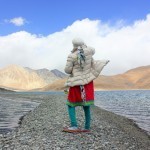
After 6 hours of uphill driving, passing by one of the highest roads in the world, Chang La, Lina and I feel the air around Pangong Lake. A fortress of mountains around us acts like a bowl which seems to hold us gently and lay us softly on the mildly meandering lake. This is the place that we had a tryst with; where we can feel the sheer chill of the water, watch gem-like pebbles through Pangong’s translucent water and behold the firmament that showers cold winds with a soothing sunshine.
We are miles away from the town of Leh, Ladakh’s capital in northern India. A stone’s throw away from the banks of Pangong is the Indian Army’s station, but that’s the soldiers’ permanent home; no threat to your free wings. Our backs still ache from the unpaved road’s zigzag rhythm; our plans of finding that vantage tripod position and spotting a different angle of the lake go invalid for the moment. The varying hues of the lake, – now blue, now grey, now turquoise – according to differing levels of sun exposure, mesmerise us at once. Lina gets down to a narrow dyke-like formation created with pebbles beside the lake’s bank. She picks up a shiny pebble, tosses it once or twice in the air, looks at the Himalayan ranges in the distance; then ululates in unbridled excitement before throwing the pebble directed toward the mountains. The pebble shoots up and then after a few seconds, somewhere far from us creates a hardly audible plop in the water. I haven’t seen her so loosened up in a foreign realm.
And then from where it is, a tiny flock of brown-headed gulls alights on the dyke, inches from where Lina and I stand fixed in the lap of a divine beauty. No trees nor resting place. Did they appear from the air’s nothingness or flew out of the mountain’s recesses? They start hopping from one place to another, staying within safe distance from us. We sit on the dyke; watching the gulls and occasionally admiring the peaks of the mountains and rolling ripples of the lake. For some slippery moments we think that it’s our home; that the mountains, the lake and the gulls, and of course, the pebbles are in our prime possession. We feel as free as the gulls who call Pangong home.
Time trickily slithers into afternoon. The sun somewhat regains his might, lending the water more beauty and saturation. The blue spread on one side and turquoise on the other get equally captivating. I drive my fingers in the cold, freezing water for a while. Lina fixes her eyes on the eastern side where the lake connects to China.
Ah! China! Within close reach of the Indian waters and we don’t have any sense of animosity generated by crude political shenanigans. In the waters of Pangong lie reflected eternal vibrations of peace. Not just us; hardly any tourist on the banks of Pangong thinks about border tensions. For Pangong is a paradise of freedom where your soul is immune to machinations of governments.
Ammo and Prakash, our Ladakhi guides grow curious about our just-earned, immeasurable joy. Till we had the first glimpse of the lake through a wedge between the slopes of two mountains on our way Ammo was the interlocutor and we were mute listeners barring occasional clarifications. At the lake’s edge we forgot everything; and everyone. I even wonder: is this how some travellers get lost and strange travelogues are penned?
Ammo tries to be back in the scene, telling us of a popular Bollywood film shot at Pangong. She is grateful to the filmmakers as they brought in more tourists to Ladakh and to this 40 mile-stretch lake more than half of which flows in China. “Whether it be in India or China, the lake knows no difference, nor the mountains change their imposing stature and magnitude”, Ammo produces a statement of optimism which is not expected out of a tourist guide’s explanatory talk. Soon we realise the Ladakhis’ pride of their region; their land in the mountains and their close proximity to one another though living in scattered villages in the valleys and on the hills. I recollect Prakash waving and even stopping by on our way here to greet the local folks each time we came across Ladakhis. Do Prakash and Ammo know all of them? Do all Ladakhis know each other? What a contrast to our chained world of inhibition!
Lina and I turn our eyes toward the snows on the mountains. We see its white glare on the azure water down on the lake. The sun seems to slowly wester away. The gathering clouds from China accumulate. We watch and dine.
About the author: I am Pramod Kanakath, an Indian national living and working in Indonesia. During my holidays I take a break from my teaching career and wander among lakes, beaches, mountains and jungles. I write about them and use my Canon DSLR to freeze some of the scenes.
Thank you for reading and commenting. Please enter the Independence Travel Writing competition and tell your story.
The post Freedom at 14,000 Feet in India appeared first on We Said Go Travel.
July 25, 2014
Freedom in between the sights in Laos
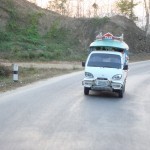
There is a freedom to the road rushing past the window, a joy in those inbetween places. Ragged towns cling desperately to roads between more lauded cities, throwing out a tendril of stalls to draw decadent travellers in. Hidden valleys sneak behind the other sides of mountains, where the road hurries round to the prettier, buffed up postcard shot. The places you see but will never be, glimpsed out of the corner of your eye but lodging there. A split second of beauty that was placed there just for you. Laos winks at you as you rush past.
That old saying on journeys and destinations, endowing many a fridge door with stuck-on philosophy, is never allowed to apply to sitting staring through glass. This is the so-called wasted time on unloved bus journeys. Especially here on the road to Phonsavan where smiling drivers cram ever more people, then even more cargo onto the tiny seats made for travellers with hardy spirits and tiny limbs. Another box of fish between you? One more bag of rice under your seat? Of course. Asia abhors a vacuum.
Perhaps we have seen too many melancholy characters staring wistfully out of prop windows, tracing rain machine sobs down the glass with knowing hendiadys. Understanding their own trope in straight to DVD movies. We do not believe that there can be joy behind the pane, a pun that luckily does not need to be excused as I sit surrounded by silent Laos travellers, between the crates of supplies for a needy town. I accidentally touch knees with the unknown companion next to me. A smile of understanding with the apology.
For me though this is no glass prison, it is my endless lookout. This is the thrill of snap encounters, the spaces between the lines in the travel guides. Endless momentum, always moving on to the next adventure. Joyous movement, carrying memories in your heart, not wistful but looking onwards. I am not crammed in by the boxes around me, they make a cocoon where I can be wherever I want to be.
Behind the gentle glass I am free to let my mind wander. I let the rolling ranks of hills, the alien trees and inexplicable shapes of rock wash over me, provoking the urge to write. I am inspired by their presence but can never name them. They do not need the tired spiel of a tour guide to justify their existence. By the furthest peaks, I learned the landscape is dug out every few paces with old craters. They shield the Western world from our shame. Laos blighted by the secret war, that ended long ago but still bites at this country’s children with cruel metal jokes left buried in fields. No wonder the landscape is silent, defiant, leaving me to make up my own mind.
There is no greater freedom than time. This is the gift that Laos hands me as I sit with no concern just a reassuring numbness. No meetings to run to, no quicker way to jump to the next stop. Just sit and enjoy the thoughts coming and going wherever they please, with the world flashing by. Words rise up and fly out from me. Not clattering against the glass as wily blackbirds did on Gran’s patio doors, crashing in for a cushy week knowing she couldn’t help but nurse them back to health. Instead, free to roam to the view through the window or the views passed before. My words soar in the knowledge we are on our way somewhere, anywhere, but as the fridge door says, we have already arrived.
Thank you for reading and commenting. Please enter the Independence Travel Writing competition and tell your story.
The post Freedom in between the sights in Laos appeared first on We Said Go Travel.
Soul Food in Santa Fe, USA

“Santa Fe is a special place,” informed one of my travel companions, as we made our way from Albuquerque to Santa Fe one late spring afternoon. As a native Texan, my new friend had been traveling to the city for years, and she had recently spent her honeymoon there, so I figured she might be just a little bit biased.
It was my first trip to New Mexico, and I was excited to see what all the buzz was about surrounding Santa Fe. All I knew about the city was that it had a renowned art scene and was Georgia O’Keeffe country. Being an art aficionado and longtime O’Keeffe fan, I planned to make a beeline to her eponymous museum the first chance I got. I had long admired the modern artist’s colorful abstracts and her simple yet elegant paintings of large-scale flowers, scenic desert landscapes, shells, clouds, and skulls, among other subjects.
As we drove on from ABQ, I drank in the gorgeous views—the breathtaking mountain vistas and the clear blue sky that seemed to stretch on forever. Arriving in the city, we headed to our accommodations at the historic Hotel St. Francis, a warm, inviting place named after the patron saint of Santa Fe. The hotel’s authentic, mission-inspired decor features a candlelit baptismal font in the lobby, handcrafted wood furniture and art by local artisans, statues of saints, wrought iron crosses, and old photographs lining the walls. With its luxurious yet rustic ambience evoking old Santa Fe, the city’s oldest hotel reflects the region’s early Franciscan missionaries. Our affable concierge gave us the full history and a tour of the property later that evening, while she also shared a few stories about the hotel being haunted, but thankfully, I didn’t experience any ghostly activity during my stay here.
Walking around Santa Fe, I eagerly soaked-up the city’s local culture, especially around the historic Santa Fe Plaza. A National Historic Landmark, the 400-year-old square serves as the heart of downtown, and many of the city’s annual events revolve around this vibrant gathering spot. Other highlights included viewing multiple exhibits at many of the city’s museums (including my beloved Georgia O’Keeffe Museum—smaller than I expected, but definitely worthwhile) and visiting the famous churches, including the stunning St. Francis Cathedral and the Loretto Chapel, which draws tourists with its “miraculous” circular staircase. Spiritual iconography is everywhere in Santa Fe, and as a first-time visitor, I found the imagery soothing—a balm for the harried soul.
During my four days of wandering around this picturesque, high-altitude city, I’d return to my lodging each afternoon to find fellow travelers enjoying a siesta out on the hotel’s streetside veranda. Taking a break from the late-afternoon heat, relaxing, and imbibing in a cocktail seemed like a smart way to acclimate to the desert climate. Those hazy, languid afternoons offered a welcome respite from the unrelenting sun, and they’re forever etched in the mosaic of my travel memories.
While our society’s current culture of busyness makes everyone feel as if they need to constantly rush around and accomplish much on a daily basis, Santa Fe allows for the opportunity to slow down and savor the experience of being a traveler in a unique destination. With an overall emphasis on arts and culture, the city also inspired me as a writer, especially in regard to knowing that it’s okay to desire an authentic, creative life. Here, in this majestic desert setting, I was free to listen to the rhythm of my own voice.
On our last evening in Santa Fe, after being thoroughly satiated by the delicious New Mexican cuisine (including green chile cheeseburgers, of course), our group met at Secreto Lounge, the hotel’s swanky bar, for a final toast and to say our goodbyes. It was a memorable night under the starry desert sky, and I believe we were all a little blue to be parting company with our new fast friends. As we sipped our drinks, one of our travel companions mused, “You know, not everyone gets to experience this. We are so blessed.”
Indeed, we were incredibly blessed to be together in the Land of Enchantment on that particular evening, and my first trip to Santa Fe remains one of my all-time favorite travel adventures. As for being a magical, spiritual place that my soul longs to return to? Yes, the city is all of that—a very special destination, as well as a conduit to artistic freedom and the pursuit of a literary life.
About the Author: Beth Fhaner is an Orange County, Calif.-based freelance writer and editor whose work appears in various print and online outlets. A former book and magazine editor, she has held positions at The Recording Academy (Grammy Awards), Westways magazine, the now-defunct Pages magazine, Borders Group, and Gale Group/Visible Ink Press.
Thank you for reading and commenting. Please enter the Independence Travel Writing competition and tell your story.
The post Soul Food in Santa Fe, USA appeared first on We Said Go Travel.
July 24, 2014
Freedom From Concentrate in Turkey
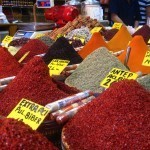
I break through one of the many crowded entryways to the world famous Grand Bazaar and let out an audible, astonished gasp. Never in my life have I seen so much activity in one place and it’s happening all around me; 360 degrees. It’s crowded, noisy, stiflingly hot and smelly-in ways both pleasant and not. Talk about sensory overload. On my left is a Turkish rug shop, it’s window display is overflowing with beautiful rugs of all shapes and sizes. They are crammed against the clear glass like ornate, delicate sardines. Next to the rug shop is a spice stall. The turban clad, moustachioed vendor is arguing loudly in turkish with a customer over a bag of what appears to be saffron-the gold of the Middle East. Across the vast hallway is a sweet shop, it’s tables piled high with sugary sweet turkish delight. My mouth waters as my eyes explore the delicious looking indulgences.
The bazaar is filled with people, oh so many people, who swirl around me in a fluid, homogenous mixture of nameless, unidentifiable faces. It would be so easy to get lost here and I bet that many people do. To just disappear into the churning crowd and simply become someone else-anyone else-is tempting, and I suppose that temptation is what attracts many of the millions upon millions of visitors who travel to Istanbul, the world’s fifth largest metropolis, every year. If there’s a place where it’s possible to feel alone and completely independent when you’re enclosed on all sides by so many other people, Istanbul is that place.
There is a peculiar sense of freedom that comes from being in such a condensed space like the Grand Bazaar. And it’s not a sense of freedom that everyone should be offered. This kind of liberty is dangerous in large doses. The sort of freedom Istanbul offers is two-fold; both choice and opportunity are boundless here.
I make my way through the ebbing and flowing crowd of bodies, travelling in a haphazard zig-zag pattern, as I am constantly pulled and pushed this way and that, towards a minuscule shop with a forlorn facade. The tinkling sound of bells greets me as I push open the heavy door and the shopkeeper, a little old woman who’s weathered face could hold three days rain, stands up from her fold out plastic lawn chair and flashes me a wide smile. As the door swings shut behind me the noise of the outside world is dimmed to a pleasant murmur.
Outside the little shop time is still hurtling on indefinitely, but for me it seems to stand still. The walls and shelves of the shop are crammed with delicate figurines, quirky odds and ends and various household items, all with a distinctly turkish character and all looking as though they belong in some other era. I’m awestruck at the array of wonderful choices and dumbfounded that the shop isn’t packed with others, it’s dilapidated storefront must keep them away. The store is certainly overshadowed by the loud and vibrant window displays and facades of it’s neighbours. It truly is a very well hidden diamond in the rough.
I could spend all day in the shop, but a day is all I have to explore the never-ending delights Istanbul has to offer. I exit the shop and venture back out into the crowded corridor ready to dive into the proverbial melting pot of possibilities. My mind is racing a mile a minute deciding what to do next, where to go, who to see, who to be. It’s trying to milk every last drop of liberty out of Istanbul’s freedom filled udders.
About the Author: Gillian Pierce is a high school student from Edmonton, Alberta. She strives to incorporate adventure into every part of her life, especially through world travel. She loves chai tea, dogs and satirical novels; not necessarily in that order.
Thank you for reading and commenting. Please enter the Independence Travel Writing competition and tell your story.
Ready to visit two continents in one country? WSGT found these travel books and gear to help you prepare.
Lonely Planet Turkey: Learn about Turkey before you go.
Turkish phrasebook: Learn the local lingo to make your trip a little easier.
The post Freedom From Concentrate in Turkey appeared first on We Said Go Travel.
Saharan Sands in Morocco
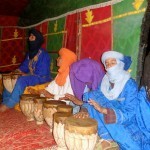
Sugar-packed mint tea coursed through my blood, and the light, quick pounding of Berber drums resounded throughout the tent. Travelers brushed aside the weariness setting upon them from a long day of camel riding through the Moroccan Saharan, and filled the colorful tent from edge to edge with their multi-language babbling.
A hand callused by desert sands grabbed my arm, and suddenly, the colors and voices of the Berber tent were spinning violently around me. “Dansez!” the shrouded face of a young man commanded as I clumsily began moving my bare feet. I quickly attempted to mirror his deft moves, lifting my knees and swaying my legs back and forth. My lack of rhythm was not conducive to the quick hops and jumps of the traditional Berber dance. I was beginning to resemble a scrambling chicken trying to avoid the chopping knife that would inevitably lead to me being served as a lovely tagine.
My eyes darted to my two friends sitting on the edge of the tent, laughing and taking pictures of my nimble maneuvers. I thought of dropping the man’s hands and running quickly to their sides. But, as I was spun in a circle, the glimmer of admiration in the smiles of dozens of tourists struck me.
With an extra enthusiastic kick and a sideways prance, I fully embraced my chicken-like status. I shook off my inhibitions, smiled and laughed. The tent full of strangers nodded at me encouragingly, recognizing my dauntlessness and cheered at my clumsy and spastic renovation of the traditional waltz. As I spun and hopped and kicked, my blood was suddenly coursing with more than just sugar-packed mint tea. It was coursing with liberation and courage. I was dancing hand-in-hand with freedom.
As the drums pounding faded and the boisterous laughs and squabbles turned to peaceful whispers, I found myself sitting with my friends under the brilliant stars of that Moroccan Sahara Desert, over a dinner of chicken tagine. We sat with the young dancing man, who unveiled to us the hardships of life in the North-African country. He spoke of his poor family who lived back in Marrakesh, of his life as a tour guide, and most poignantly, of his travels. In beautiful, accented French, he had spoken to us, in a low, serious voice, “I have traveled everywhere in the world.” Avid and curious travelers ourselves, we leaned in closer and pressed him to tell us how he had accomplished such a marvelous feat. “When I want to travel,” he said, “I close my eyes and point to a place on a globe. Wherever my finger lands, that is where I am. I go there in my mind.”
The young man taught me that night that capturing independence and freedom is as simple as pushing aside your inhibitions and allowing yourself to dance like a crazy chicken. But it is also more than that. Freedom is accessible no matter where you are, no matter what your limitations. Freedom is simply the ability to boldly swan dive into the depths of your own imagination, and use it to carry yourself to another land, where all restrictions, financial, physical, or mental, fade into nothing more than trivial specks of Saharan desert sand.
About the Author: Pamela Barry is a recent graduate who studied Romance languages and International Development. She loves to travel, write, read and run and just returned from a year of teaching and traveling in France.
Thank you for reading and commenting. Please enter the Independence Travel Writing competition and tell your story.
The post Saharan Sands in Morocco appeared first on We Said Go Travel.
July 23, 2014
Introducing Float Plan One: The App That Can Save Your Life
 Introducing Float Plan One: The App That Can Save Your Life…and a special WeSaidGoTravel Reader Discount!
Introducing Float Plan One: The App That Can Save Your Life…and a special WeSaidGoTravel Reader Discount!ATTENTION ALL BOATERS, DIVERS, AND WATERSPORTS ENTHUSIASTS:
It saves lives. It saves property. It is taught by every water safety expert, endorsed by every search-and-rescue agency and both the Candian and U.S. Coast Guards, and strongly recommended by every boater group, website, yacht club, journalist, blogger, marine insurance company and boating professional in North America ……and yet, amazingly, almost nobody actually does it.
According to the people who study actual behavior by real people on real boats (megayacht to kayak, power, sail or paddle, on rivers, lakes, or oceans) a scant FIVE percent of all boaters actually and consistently do this vitally important thing that they’ve been told could save their lives each and every time they leave the shore. Clearly, something’s not working about this critical safety procedure, and clearly somebody should solve the problem before more lives and property are lost.
So we did. We call it Float Plan One: “The App That Can Save Your Life.”
Float Plan One didn’t invent the float plan. We just made it work. We took out the tedious paperwork that the fun-seeking boater just won’t do, but we went beyond mere mobile “paperwork simulator” aps to create a secure, comprehensive, web server-and-GPS-based fail-safe system that makes simple sense for the boater and their on-shore contact alike. Float Plan One tracks a voyage’s progress without fail and without relying on onboard systems that might be disabled by an emergency themselves. No matter what happens on your boat, Float Plan One keeps on working independently and inexpensively ashore, ready 24/7/365 to send that life-saving alert with speed and reliability the moment a boater is overdue.
 Float Plan One also trains your on-shore contact on whom the whole float plan concept relies, making their task in an emergency easy, efficient, and effective. Even if they have absolutely zero understanding of boating terminology and practices, they’ll gain confidence in their ability to help and the peace of mind that will make all voyages away from them (including the majority that do not end in distress) just plain happier. They’ll know exactly who to call, what to say, what to do, and how to best get the vital information to the right search-and-rescue people by actually forwarding a pdf of your float plan to them instantly—and in a crisis, “instantly” instead of “eventually” is often literally the difference between life and death.
Float Plan One also trains your on-shore contact on whom the whole float plan concept relies, making their task in an emergency easy, efficient, and effective. Even if they have absolutely zero understanding of boating terminology and practices, they’ll gain confidence in their ability to help and the peace of mind that will make all voyages away from them (including the majority that do not end in distress) just plain happier. They’ll know exactly who to call, what to say, what to do, and how to best get the vital information to the right search-and-rescue people by actually forwarding a pdf of your float plan to them instantly—and in a crisis, “instantly” instead of “eventually” is often literally the difference between life and death.
WeSaidGoTravel readers and their families and friends can become Member Captains in Float Plan One now by visiting the website at www.FloatPlanOne.com AND by entering this special just-for-you introductory discount code CAMO8916E4E-10 at checkout the customary $35 Activation Fee will be completely waived, too! Visit the site for more info about exactly how Float PlanOne, “The App That Can Save Your Life” might just save yours.
More information: WEB, Facebook, Video, APPS are available in both Ios App Store and GooglePlay Android
Contest during the month of July: EVERYone who becomes a member is in the drawing for TEN prizes of a FREE one-year extension to your Float Plan One Member Captain membership! Act now, and you might recieve two years for the price of one!
The post Introducing Float Plan One: The App That Can Save Your Life appeared first on We Said Go Travel.
A Dhow Day on the Sea of Oman
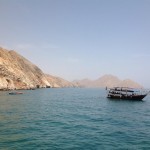
There is something about being on the open road that connotes freedom for me. It’s the same liberating feeling that I get when I go bike riding along the shore- that indescribable sensation of sailing through the air effortlessly, that feeling of having the weight of the world lifted off my back, that feeling of being untarnished by time or place. So when opportunities within my travels, beckon me to head out on the road or out to the sea, I heed the call to explore unfamiliar terrain.
An ideal way to experience the UAE’s “border countries”, Oman and Saudi Arabia, is to venture out on the open road. Approximately 3 1/2 hours (192 miles) outside of Abu Dhabi City, lie the Northern tip of Oman, the Musandam Peninsula, a region of Oman known for its picturesque and unspoiled beauty, attracting many sea-faring tourists and bohemians such as myself.
Although I am not an accomplished swimmer (honestly, I would officially be categorized as a non-swimmer and yes, I did scour out the life jacket situation to assess that there was a reserve of jackets on board), I booked a ½ day excursion with Al Mariah Travel (www.almariahtravel.com) for a languid day on the sea (Please note that if you choose not to drive directly to the Rahal Musandam Port in Oman, Al Mariah Travel will gladly do pick ups and drop offs to and from Dubai or Abu Dhabi for an additional surcharge). For just 100 dirhams ($27) I hopped aboard a modern dhow boat, inspired by ancient Arab sailing vessels, and was whisked away in time through majestic mountains and fjords. The only essentials needed were sunscreen, spritzer, bathing suit, and journal, of course, to record my musings.
The first stop on this sea adventure brought us to Telegraph Island, where those looking for extreme fun could be careened through the waters on an inflatable banana boat. If you chose to opt out of the selected water sport activities, you could lounge on the upper deck with a classic cocktail (Cuba Libre) in hand and consume the view–the rugged Hajar mountains hugging the pristine coastline. The second stop on this journey landed us at Seebi Island, an area where those who desired to snorkel and/or swim could bathe themselves in the azure seas of the Gulf of Oman. As this would be the area where the boat would linger for the larger portion of the day, this “pit stop” provided ample opportunities for individuals to decompress and cool off, before a hearty lunch buffet would be served. Traditional Arabic appetizers -hummus , tabouleh, kufta (ground meat patties), and grilled mixed meats were served. Lamb biryani which I believe is the Middle East’s reputed answer to Arroz con Pollo, cumin-scented chicken stewed with carrots and potatoes, mix vegetables salona (vegetable stew with chickpeas), grilled hammour (local fish) with cardamom, were there for the taking. If you didn’t manage to gorge yourself on the main dishes, then you could feast on the spread of Arabic sweets- maakroun (fried dough usually served with date syrup), haresa semolina cake (cake made from wheat flour, sugar, butter, and yogurt), stuffed dates, and fresh fruit.
The last stop on this 5-hour excursion was unequivocally geared towards those with young children- line fishing in the sea, which was more for novelty than for angling. Nonetheless, all participants gave it a true scout’s try, prompted by the promise of a “big catch”.
I’m not sure what it is about coming back from a ½ or full day sojourn out on the sea that makes an individual feel as if he/she has just returned from an epic adventure as a maritime seaman, perhaps as a result of throwing caution to the wind in the unfamiliar setting whilst respecting the majesty of the sea. The only thing that seemed wanting on the journey back home was the honeyed sounds of local Arabian music.
About the author: I am an “Artiste” (Painter, who has exhibited artwork in galleries in NY,NJ), lover of all music and art forms, “foodie”, educator, writer, who has always been passionate about connecting with people of diverse backgrounds. I have been living in the Middle East for the past 5 months and hope to continue trekking across the globe to engage in experience “nouveau”.
Thank you for reading and commenting. Please enter the Independence Travel Writing competition and tell your story.
The post A Dhow Day on the Sea of Oman appeared first on We Said Go Travel.
Nicaragua:Unexpected places the truth hides
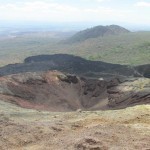
Sitting on a beach is perhaps the most stereotypical place to ‘find yourself’ but my experience was a little different. Yes it was a ‘tropical’ beach with white sand and clear warm waters in Mexico but it represented to me everything I didn’t want and everything I wanted to be free from.
Hundreds of burnt reality-escapees lazed around me, occasionally applying more suncream to their already damaged skin, talking little, taking selfies, drinking the latest craze and cooling off in the just as packed sea, over-heating sea.
And it was here that I had come at the end of my travels to relax and unwind one last time before heading back home. But I just couldn’t stop thinking back to the other places I had been. Places I had really felt free but hadn’t been able to appreciate it until now. Seeing how the other half live – I knew it wasn’t for me.
I’d gone to Central America to volunteer on a conservation project in the south of Costa Rica in a little place called Piro, an hour and a half bumpy collectivo ride from the nearest town. As you head down the road, away from the civilization, you soon lose phone signal, as the cables all disappear and the roads get less cared for and the houses turn to farms. This was the real side to the country – where ordinary people lived their ordinary lives that were so far away from my own. I spoke little of the language, I had turned up by myself and I felt alone and vulnerable but free. It was scary of course, but it was the only way to become a proper part of the local way of life.
From this place to the Cerro Negro volcano just outside Leon in Nicaragua I learnt a lot. It was a tough walk up, the path winding between rocks and craters and the wind was so strong at the top that you had to actually concentrate in order to not fall over. But once at the top you could look down across the remnants of previous eruptions and see the string of other volcanoes stretching far into the distance. In that moment you are shown how big the world is and how small you are. That can be too overwhelming for some. But for me, it reminded me that if I was small, so were my problems. That the life I lived at home was not everything, in fact to the people who would be wiped out should these volcanoes erupt – it was nothing at all. I realised right then I could do anything I wanted, and whether I succeeded or not, the world I watched from atop the volcano would continue just the same; so why not try?
Another city in my travels – Granada, Nicaragua, I sat upon a hostel roof looking out over the tiled roofs baking in the sun. I couldn’t see down to the street but I knew the people were there. I realised that I could have been anywhere just then. That all the unseen people were not so different really, everyone has these same thoughts and goals and basic human experiences and the lucky have the opportunity to do what they choose and if that’s the case, we should do it, even when it scares us. And if it all becomes too much for me, now that i’m back home. I will think back to those people on the beach, the people whose lives I didn’t want, and think back to the people of Costa Rica, living a simple but happy life. I will think back to what I felt on top of the Volcano and remember there is so much more than this moment, and everything can change in a second. I’ll remember that feeling and I remember I am free to live.
Thank you for reading and commenting. Please enter the Independence Travel Writing competition and tell your story.
Going to Central America? WSGT found these travel books and gear to help you prepare.
Central America on a Shoestring: Don’t have a lot of money but a travel lust? This is the perfect book to help you plan!
Spanish phrasebook: Learn some of the local lingo before you go.
The post Nicaragua:Unexpected places the truth hides appeared first on We Said Go Travel.
July 22, 2014
Creating the Perfect Tallinn Tour – Part One
The center of Tallinn has a medieval feel and charm that sweeps you away to another time and world. Tallinn has a rich history that is remarkably preserved and showcased for visitors. Although Estonia was a Soviet state for many years, the people feel themselves more Nordic. This mix is evident throughout the city and brings contrasting styles and cultures to the architecture.
However, it is the medieval architecture that really captures the imagination as the city has never been razed or pillaged. Tallinn also offers cultural and city experiences that everyone can enjoy with a few glorious hours. One of the best ways to see Tallinn is with guided Tallinn tours that give a richer experience and save time, especially if you only have a few days to see the city.
There are over 1.5 million visitors to Tallinn each year and Old Town Tallinn is a UNESCO World Cultural Heritage Site. As over 300 ships visit Tallinn each summer, cruise ship passengers will also benefit from organized Tallinn tours as the time goes very fast. Guides can enlighten you to the secrets, history, and interesting information that abound in the city. Creating your perfect Tallinn tour should start with choosing from the array of amazing attractions.
Here are a few Must See Sights in Tallinn:
Seaplane Harbor
Hundreds of exhibits portray the military and maritime Estonian history. The airplane hangars, built in 1916 were Peter the Great’s fortress which was the first large scale, reinforced shell of concrete in the world. Charles Lindbergh landed here in the 1930’s.
The Cathedral and Tower of St Mary the Virgin (the Dome Church)
The Dome Church (Toomkirik), on Toompea hill is from Medieval times and is a historically fascinating viewing spot of the Pelgulinn and Kalamaja areas.
Pelgulinn
This means “a hiding place, in Estonian” and was used by outlaws and criminal in the 18th century as a safe haven because its forest offered a secret space for them.
Kalamaja
This means “fish house, in Estonian” and is on the Bay of Tallinn. Up until the 1870’s, when the railroad linked St Petersburg with Tallinn, the city was the hub for fishing in Tallinn. The railroad brought huge factories to the area and Kalamaja’s, well kept homes were built in a colorful wooden style for the factory workers of the region.
Kiek in de Kok
Medieval tower viewing spot. This cannon tower means “Peek into the Kitchen”. While guarding the city from this tower, guards said they could see down into the kitchens of the houses below from their chimneys. The Museum has a display of medieval weapons and is an entry point to the hidden Bastion Tunnels under Toompea Hill. This is also a great place to buy souvenirs.
Bastion Tunnels
Some of these tunnels were built during the time of Swedish rulers in the 1600’s. A train will take visitors through these medieval tunnels to see original defense equipment and the future of the tunnel system. The secret tunnels were built to protect the men and ammunition from enemies and were posts for spying on enemy activity. In 1936 the passages were converted to air raid shelters for protection from the Soviets. They were equipped with fresh running water, ventilation and phone systems. Toilets and bedrooms were added also. The Bastion area is now a park.
Kohtuotsa Platform

A breathtaking view of Old Town’s city skyline from this spot. You will also catch a glimpse of the Gulf of Finland in the background. One of several fantastic photos stops.
Patkuli Viewing Platform
Located in an ancient area of Tallinn, the views of the city walls, towers and the port are out of a fairy tale. There are 157 steps to the top and this is another great photo stop.
St Olav’s Church and Tower (Oleviste Church)

The highest building in the skyline of Tallinn makes this one of Tallinn’s best viewing spots. This Gothic church from the 13th century was once the world’s tallest building. The church’s 159 meter steeple was struck by lightning 3 times and the church burned to the ground. The current 124 meter spire keeps this as one of the tallest buildings and is one of the most recognizable landmarks in the city.
Estonian History Museum – Great Guild Hall
The museum is in the 15th century Great Guild Hall. The guild consisted of “married” German businessmen who controlled the town’s politics. The museum’s extensive collection includes history from the prehistoric to the present time. Look for the dragon pillar, door knockers of a lion head, and a large porch. Spend some time in the fun courtyard.
Estonian Maritime Museum
The sea is a very important part of Estonia’s past and future. On the four floors of the tower of Fat Margaret are displays of a 1950’s trawler wheelhouse, fishing equipment, and diving gear. Take the trek up to the top for an exquisite view of Old Town and the harbor.
Holy Spirit Church
The intricate clock on the face of this 14th century church is the oldest landmark in the city. The inside includes special carved wood and an exceptional altar crafted by Bernt Notke, a famous artist from Lubek. The church was part of the Holy Spirit Almshouse that cared for the elderly and sick. It was the church of the commoners.
St. Nicholas’ Church (Niguliste Museum)
German’s settled here back in 1230. The church was also considered a fortress but was bombed during World War II. After the 1980’s restoration, it became a museum of religious artifacts such as altar pieces, a fine but scary painting from Bernt Notke called Dance with Death (Danse Macabre) and chandeliers in the baroque style. The Silver Chamber is where the city’s craftsmen display their art works.
Tallinn TV Tower

This 314 meter tower hosts interactive exhibits of Estonian history, a story of the tower in 3D, and a café with a platform for viewing that is one of the tallest spots in the country. There is a special presentation that shows the view magnified by 10. Outdoor performances, exhibits and concerts are held here.
Tallinn Botanic Garden
Next to the TV Tower, the River Pirita is a nature lover’s paradise with thousands of local and rare foreign plants. Medicinal, seasoning/spice plants and beloved houseplants are on display in the outdoor gardens and the Greenhouse. Picnic areas are available for public use. To get the most from your visit, choose a guided tour offered in Estonian, Russian, English and Finnish. 2 nature trails were created, 3.9 km and a 2.5 km long for strolling through the 15 habitats, some of which are the pine forest, grassland, oak forest and a fern valley.
Continue to Creating the Perfect Tallinn Tour – Part Two
The post Creating the Perfect Tallinn Tour – Part One appeared first on We Said Go Travel.
We Said Go Travel
We Said Go Travel is a global community of over sixteen hundred writers with articles from every continent.
Stories are shared with photos and video from a perspective of the transformative power of travel. We Said Go Travel has hosted live and online events as well as travel writing contests around the world. ...more
- Lisa Niver's profile
- 57 followers




